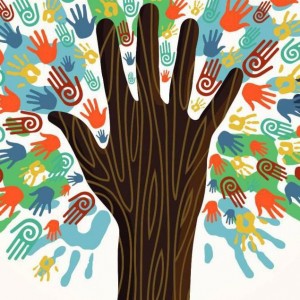By Matthew Krumholtz
COVID-19 has magnified unsustainable levels of inequality across the U.S. From access to health coverage to disproportionate mortality rates in communities of color, this pandemic has acted like a tracer dye through our systems and institutions, revealing the intersectional vulnerabilities of historically marginalized communities. For nonprofits, addressing the critical issues surrounding racial equity is as urgent as ever, even while obstacles to funding streams and opportunities for systemic change emerge with greater clarity.
Not only have communities of color suffered from higher infection rates of COVID-19, people of color are in higher need of support, since they make up a disproportionate percentage of the low-wage workforce and the precarious jobs that are being cut.
Many funders are responding to the crisis of inequity with new grant making strategies that incorporate a racial equity lens. As the Bridgespan Group notes, nonprofit organizations led by people of color face greater barriers to necessary resources and are at far higher risk of closure –– at a moment of critical urgency for the communities they are serving. The Bridgespan Group recommends that funders take a racial equity approach to giving in contrast to a race-neutral framing, which does nothing to address the structural racism –– historically rooted and socially reinforced –– that underlies the vast disparities we are witnessing through the course of the pandemic.
A prominent solution that has been widely echoed relates to the need for organizations to demonstrate and measure their impact. Advice related to unequal funding for racial equity often centers on building data systems and reporting tools to demonstrate to funders the success of relevant programs. However, the organizations that have the most impact in serving communities of color are not necessarily the ones with the resources to develop time-intensive, data-driven cases for philanthropic support.
In Nonprofit Quarterly, Lori Villarosa points out that financial disparities are so deeply rooted in the nonprofit sector that funders risk perpetuating the status quo, unless they intentionally shift the focus and scope of their grant making.
Villarosa usefully advocates for seeing racial equity and racial justice as two sides of the same coin, with the former being a critical need and the latter a transformative vision. Not satisfied by naming and understanding the structural barriers that disproportionately face communities of color, a racial justice approach examines the systems-wide solutions that address inequities and move us toward a more just, inclusive society.
This movement from awareness to action requires looking at interventions from a systems-level perspective. The interlocking vulnerabilities experienced by communities of color demand transformational change, where each of us –– as nonprofits, consultants and funders ––determine how we can multiply our impact by working together toward a shared aim of racial justice.
COVID-19 has laid bare the unsustainability of a system built on the debased scaffolding of structural racism. Repairing this broken system will take a bold collective effort, and nonprofit organizations are a critical point of light in the constellation of change we need.
